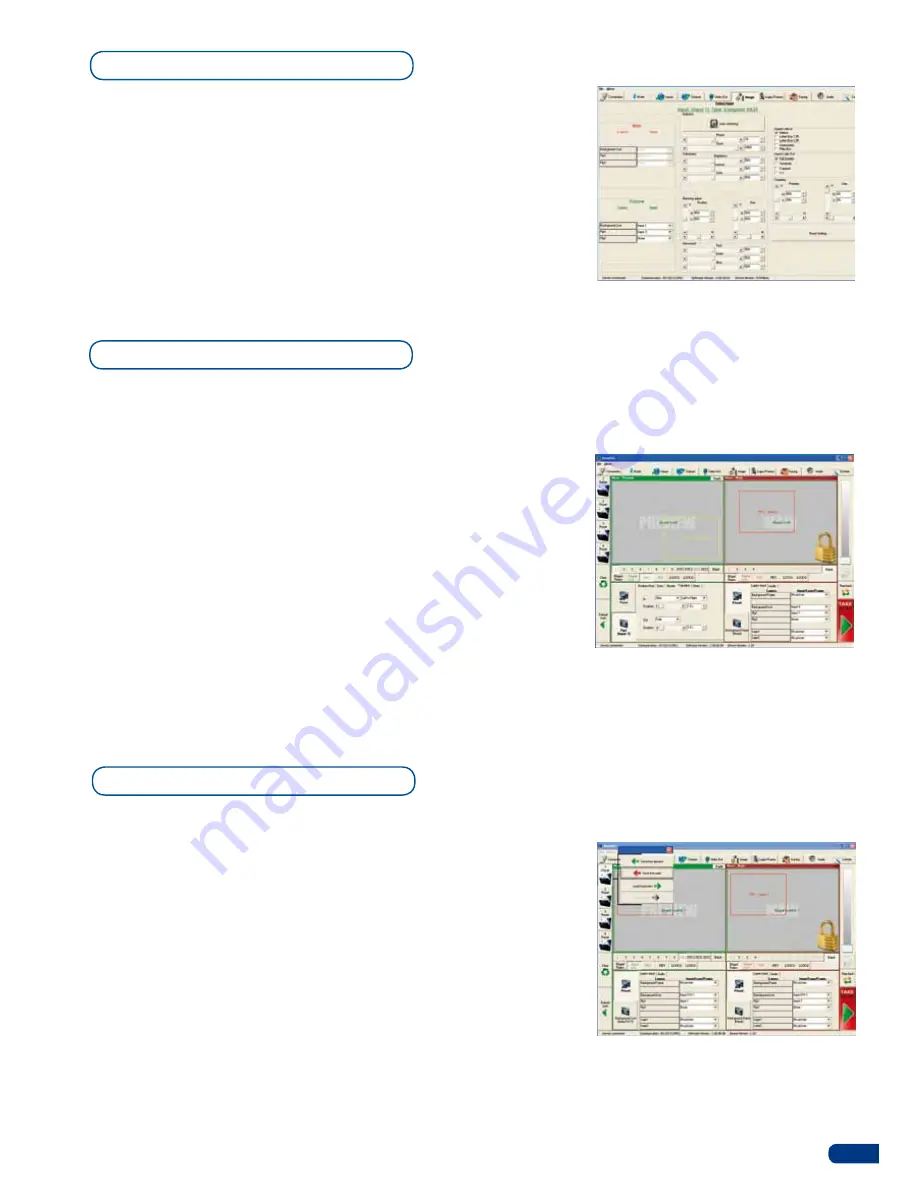
45
1/ Click on the
Image
tab of the RCS interface. The empty
Image
screen will appear on screen.
2/ By clicking on the drop-down menu in the Preview section, situated
next to the layer you wish to use as a PIP, you will access the image
parameters of the PIP source you select (1-10).
3/ Set the desired PIP attributes (size, position, zoom, border,
transparency...).
4/ Click the
Image
tab to return to the main screen.
PIP configuration
Layer transitions & effects
The
Smart Vu
offers a wide variety of transitions between the scenes
you create for your shows and events. It allows for live recall of 4
user presets, each of which you can edit at any given time.
1/ In the Layer Selection section, click the PIP button. On your Preview
screen, PIP1 will appear as a color rectangle. The parameters of the
layer will automatically appear in the RCS Preview section.
2/ At the bottom of the Preview section, click on the
Transition
tab,
then select the transition type from the left dropdown menu, and the
effect behaviour from the right dropdown menu.
3/ Determine effect duration by sliding the duration bar left (shorter)
or right (longer), or by manualy setting the value in the duration
value box.
3/ Repeat the procedure in the
Closing Effect
tab to determine the
way your layer will close.
The
Smart Vu
allows the creation of user defined presets very
easily. Any setup you have configured on screen, can be stored into
one of the 4 available user presets.
1/ After having configured layers, PIP transitions, logos... on your
screen (see “Working With the RCS” chapter, p. 42), click on one of
the four available
Preset
buttons.
2/ In the dropdown menu, choose
Save From Main
or
Save From
Preview
to determine which screen you want to memorize the preset
from.
3/ By clicking one of the two options, the RCS will automatically load
and preview the selected Preset.
4/ Click the Take button to view your preset on the Main screen.
Creating presets






















